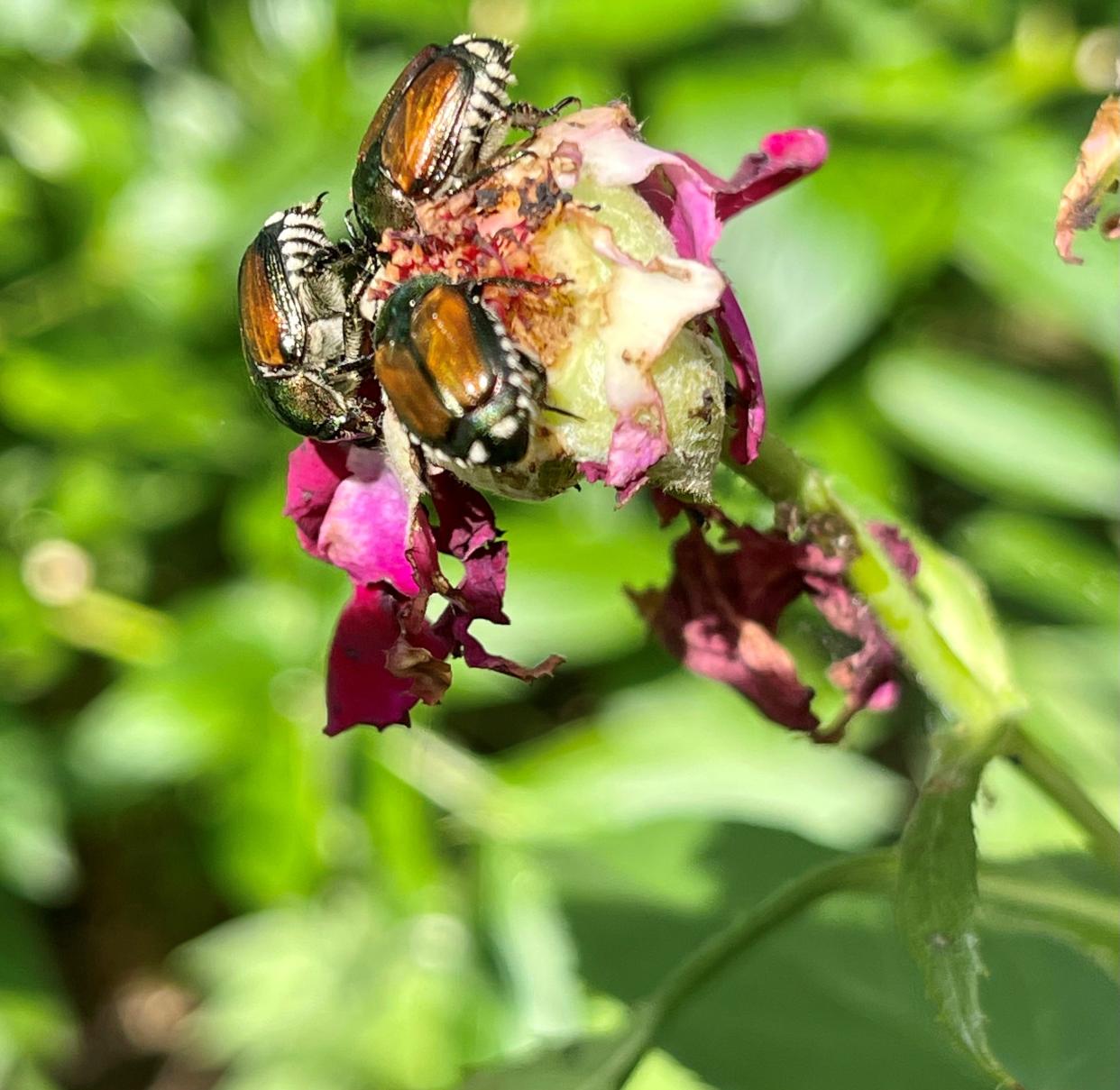Here's what last year's dry summer and a mild winter mean for this year's Japanese beetles invasion in Wisconsin

With the Fourth of July comes not just backyard barbecues and fireworks but Japanese beetles, too.
The green and copper-colored beetles with an appetite that’s destructive to hundreds of plants are beginning to show up in gardens across Wisconsin, and, unfortunately, they’re right on schedule.
PJ Liesch, director of the University of Wisconsin-Madison Insect Diagnostic Lab, began seeing reports of Japanese beetle activity the last week of June, which is typical. Numbers will increase during their prime feeding months of July and August when they damage (but usually don't kill) roses, grape vines, basil, raspberries, crabapples, birches and ornamentals, among others, by skeletonizing the leaves.
(The first official sighting in the state was June 2, but don’t freak out. Liesch thinks that was likely a grub that emerged from an extremely sunny spot or south-facing slope.)
Japanese beetles are one of the top insects he gets questions about every season, and while he doesn’t have a crystal ball to predict what their population numbers will be this year, he has a pretty good idea.
“My general suspicion is that for a given spot in the state things may actually be fairly similar to last year in many areas,” he said.
Area from Sheboygan to Green Bay to Door County a 'hot spot' last year
What last year was like on the Japanese beetles misery scale depends on where you live. A region in east central Wisconsin, from Sheboygan to Oshkosh to Green Bay to Door County, was “a hot spot” for both the adults that feed on plants and the grubs that feed on turf grass roots, Liesch said. Overall, however, populations in the southern half of the state have been lower in the past two or three years, likely in part to drier-than-normal conditions last summer and, in some regions, the last two or three summers.
Adult Japanese beetles lay their eggs in summer in turf grass, preferably lower-cut, irrigated lawns. Once those eggs hatch, the larvae or white grubs, feed on the roots of grass through the rest of summer. In fall, they move down 8 to 12 inches below the surface to overwinter. In spring, as the soil warms, the grubs move back up, feed for a bit, pupate in late spring and early summer and then emerge as hungry adults.
Dry conditions the last couple of years have meant crunchy lawns and not great egg-laying conditions, which may have helped suppress their numbers, Liesch said.
But all the rain so far this year could mean a different story next year.
“If they have a lot of lush green lawns this year that might allow their populations to increase going forward. We don’t know for sure until a year from now or so,” Liesch said.
Reports of activity in northern half of state have been increasing
The northern part of Wisconsin, from the Highway 29 corridor and upward, has historically not seen much beetle activity, but that has been changing in the past few years, he said. Reports have increased from places like Oneida, Vilas, Sawyer and Washburn counties.
Liesch doesn’t expect Wisconsin’s mild winter to impact this year’s numbers. When soil temperatures begin to drop in the fall, it’s a signal to the grubs to move down deeper to survive the winter. It takes brutally cold weather, like the polar vortexes of the winter of 2013-14, and little snow cover for the frost to penetrate deep enough in the soil to kill the grubs.
Dunk them in soapy water as soon as they begin showing up
For home gardeners who have the time, one of the best ways of controlling the pests is to knock them off plants into a container of soapy water to drown them. Research has shown being especially diligent about the practice early in the season may help keep them in check as the summer goes on.
The beetles smell odors or chemicals from plants that first draw them in. When they feed on the leaves, additional volatiles from the plant are released into the air that then attract more beetles.
“This is the classic analogy of blood in the water attracting sharks. That’s what goes on,” Liesch said. “You get a plant that gets damage, and it’s a positive feedback loop. That can attract additional beetles. which cause more damage. You get more chemicals released that can attract additional beetles and on and on.”
More: How to manage Japanese beetles without hurting pollinators
Kendra Meinert is an entertainment and feature writer at the Green Bay Press-Gazette. Contact her at 920-431-8347 or kmeinert@greenbay.gannett.com. Follow her on X @KendraMeinert.
This article originally appeared on Green Bay Press-Gazette: Japanese beetles are here. What Wisconsin gardeners can expect in 2024

